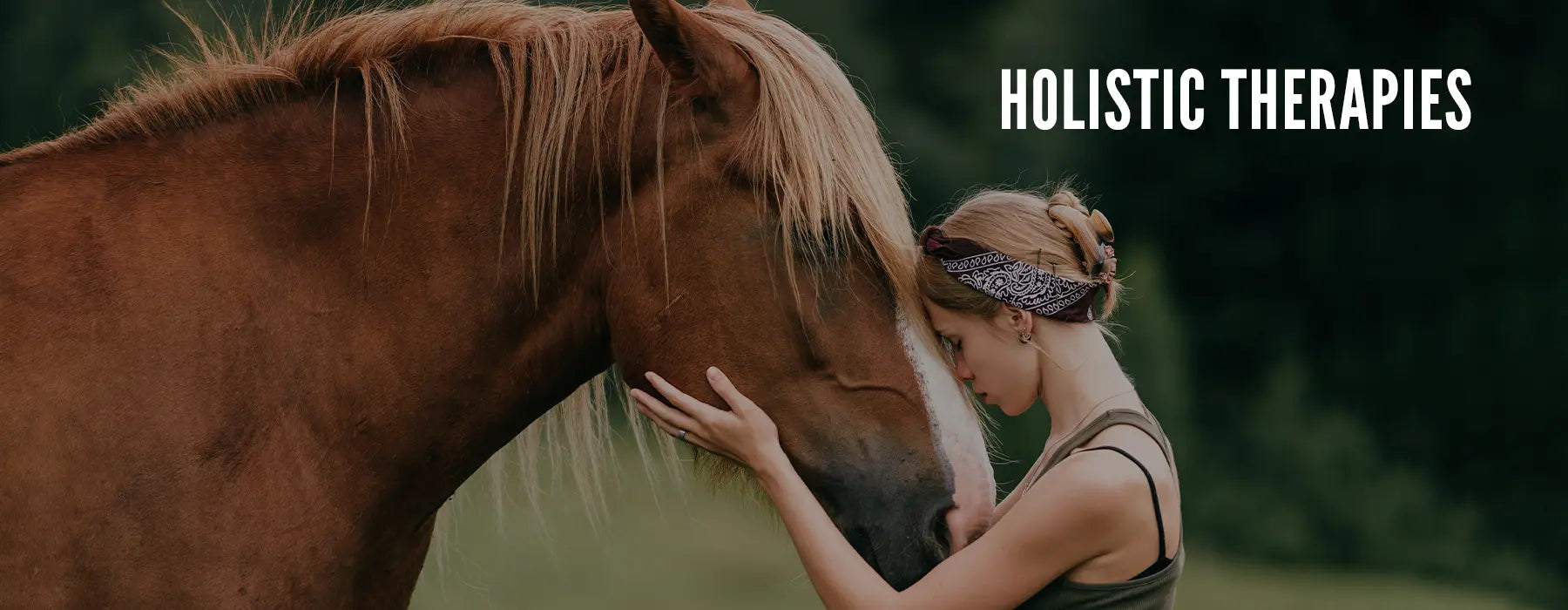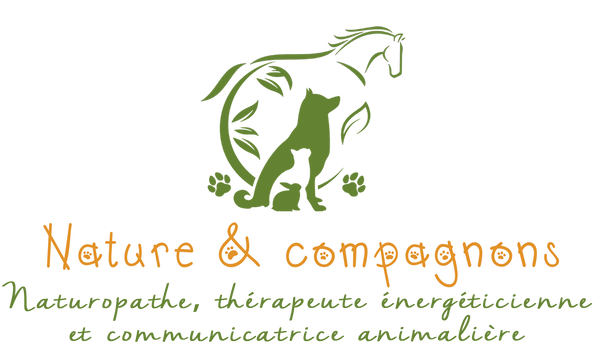
Discover how naturopathic techniques can improve your pets' quality of life while respecting their deepest nature.
-

Animal communication is a fascinating and increasingly recognized field that allows us to better understand our pets and meet their emotional, physical, and psychological needs. This practice involves establishing an intuitive connection with animals, allowing us to perceive their thoughts, emotions, and sensations. Animal communication, also known as intuitive communication, is based on the idea that humans can connect on a deep level with animals to receive information about their emotional, physical, and mental states. This form of communication is primarily conducted through intuition, mental images, feelings, and impressions received. It is not limited to usual verbal or behavioral exchanges and transcends language and species barriers.
-

Dowsing is an ancient method used to detect energy imbalances using tools such as pendulums or rods. It relies on the ability to capture the subtle vibrations emitted by a living being or its environment. Each individual, whether human or animal, emits a unique energy signature, and dowsing can identify areas of disturbance or specific needs through this vibrational reading. In the context of animal care, this gentle practice is used to guide therapeutic choices, for example by determining the most appropriate flower essences, stones, or energy treatments. It can also help locate pain, assess stress levels, or guide a search for a lost animal by connecting to its energetic imprint. Integrated into a holistic approach, dowsing enriches the connection between the practitioner, the animal, and its environment, thus promoting lasting well-being.
-

Magnetism is a natural energy practice that involves transmitting energy through the laying on of hands to rebalance the body and mind. Every living being has an energy field, sometimes disrupted by stress, illness, or emotions. Magnetism works gently to release these blockages, soothe tension, and stimulate self-healing abilities. This method is particularly well-received with animals because it respects their rhythm and sensitivity, without forced contact. Sessions can thus relieve physical pain, calm anxiety, or support a healing process. Integrated with other approaches such as naturopathy or animal communication, magnetism promotes a return to harmony by acting on the physical, emotional, and energetic levels.
-

The well-being of our pets is a priority for all pet owners. In addition to traditional veterinary care, massage and acupressure are increasingly popular methods for improving the health and comfort of our four-legged friends. These techniques, when practiced correctly, can provide significant benefits in terms of pain relief, stress reduction, and improved quality of life. Before beginning any new therapy, it is recommended to consult a professional to ensure these methods are appropriate for your pet. By incorporating these practices into your pet's care routine, you can provide increased comfort and well-being while strengthening your bond with them.
-

Lithotherapy is a holistic practice that relies on the use of stones and crystals to balance energies and promote well-being. Each stone has specific properties, influencing the physical, emotional or energetic aspect of a living being. In lithotherapy, stones are chosen according to specific needs, whether to soothe tensions, strengthen vitality or support a healing process. Used for both humans and animals, this gentle and natural method accompanies other therapeutic approaches in a global vision of harmony between body and mind. In the context of animal care, stones can be placed near the animal, on specific points of the body or in its daily environment, in order to diffuse their energetic benefits in an optimal way.
-

Aromatherapy, well known for its benefits for humans, is also gaining popularity in the animal world. Using essential oils to improve the health and well-being of our four-legged friends can be a gentle and effective approach. Animal aromatherapy involves using plant-derived essential oils to support the physical and emotional health of animals. Essential oils are concentrated extracts obtained by distillation or cold pressing of plants. Each has specific properties, ranging from relaxation to boosting the immune system.
-

Phytotherapy, or the use of medicinal plants, is an ancient practice that is now finding significant traction in animal healthcare. By harnessing the healing properties of plants, it offers a natural and holistic alternative for preventing and treating various ailments in our four-legged friends. It involves using medicinal plants in various forms (herbal teas, extracts, essential oils, etc.) to improve the health and well-being of animals. This approach is based on the principles of traditional medicine, enhanced by modern scientific knowledge of the pharmacological properties of plants.
-

Bach Flower Remedies are a healing method developed by Dr. Edward Bach in the 1930s. They are increasingly popular for their ability to restore emotional and mental balance, not only in humans, but also in animals. These flower essences, prepared from plant and wildflower essences, offer a gentle and natural approach to helping our four-legged friends overcome various negative emotions and promote their overall well-being. Bach Flower Remedies consist of 38 flower essences, each designed to address a specific emotion.
-

Gemmotherapy, also known as "bud medicine," is a branch of herbal medicine that uses the embryonic tissues of plants—buds, young shoots, and rootlets—to promote health and well-being.
Gemmotherapy relies on the use of plant buds and young shoots, which contain all the vital energy and medicinal properties of the developing plant. These embryonic tissues are rich in vitamins, minerals, trace elements, and other bioactive substances. Gemmotherapy remedies are prepared by macerating fresh buds in a mixture of water, alcohol, and glycerin, allowing their active ingredients to be extracted and preserved. -

Homeopathy, a therapeutic method based on the principle of similarity and the use of infinitesimal doses of natural substances, is increasingly used to treat animals. This gentle, non-invasive approach offers a valuable alternative or complement to conventional veterinary treatments, allowing a variety of health problems to be treated in a holistic and welfare-friendly manner. Animal homeopathy is based on the same principles as human homeopathy. Developed by Samuel Hahnemann in the 18th century, this method is based on the "law of similars": a substance that causes symptoms in a healthy animal can, when administered in very small doses, treat those same symptoms in a sick animal.
-

EMDR (Eye Movement Desensitization and Reprocessing) is a therapeutic method widely used in humans to treat trauma and emotional disturbances. Recently, this approach has been adapted for animals, offering a new avenue for improving their emotional well-being and addressing trauma. Let's discover together how EMDR can benefit our four-legged friends.
In animals, EMDR is adapted to use body movements and sensory stimulations suited to their nature and comfort. -

EFT, or Emotional Freedom Techniques, is an alternative therapy method that combines modern psychology with the principles of traditional Chinese medicine. Often called "tapping" because of the gentle tapping performed on specific points on the body, this technique is used to release negative emotions and reduce stress. Although widely used in humans, EFT is also gaining popularity in helping animals manage their own emotional and behavioral challenges.
EFT involves gently tapping on specific acupressure points on the body while focusing on an emotional or physical issue. These points correspond to the energy meridians used in acupuncture. The goal is to restore the body's energy balance and release emotional blockages that may be contributing to unwanted behaviors or health problems. -

Diet plays a crucial role in the health and well-being of our pets. Proper nutrition can prevent many diseases, improve vitality, and extend the lifespan of our companions. Among the various nutritional approaches, the BARF (Biologically Appropriate Raw Food) method, also known as a raw food diet, is gaining popularity. Let's explore what the BARF method is, its advantages, its disadvantages, and how it can be implemented to optimally nourish your pets.
The BARF method, an acronym for "Biologically Appropriate Raw Food" or "Bones and Raw Food," advocates a diet consisting primarily of raw meat, bones, organs, and vegetables. This dietary approach aims to mimic the natural diet of wild animals, believing that raw food is more appropriate for the physiology of domestic dogs and cats. -

Probiotics, often referred to as "good bacteria," play a crucial role in maintaining digestive and overall health in both humans and animals. Their use in animal nutrition is becoming increasingly common, supported by scientific research highlighting their many benefits.
Probiotics are live microorganisms, primarily bacteria and yeasts, which, when administered in adequate amounts, confer a health benefit to the host. They help maintain the balance of intestinal flora, promoting healthy digestion and strengthening the immune system. -

Prebiotics, although often confused with probiotics, play a distinct and crucial role in maintaining the digestive and overall health of animals. While probiotics are live microorganisms, prebiotics are indigestible dietary fibers that feed these good bacteria. By promoting the growth of probiotics in the gut, prebiotics contribute to a healthy and balanced microbiome.
Prebiotics are indigestible food components, primarily fiber, that promote the growth and activity of beneficial bacteria in the gastrointestinal tract. They serve as food for probiotics and other beneficial microorganisms, helping to maintain a healthy balance of the gut microbiome.
















